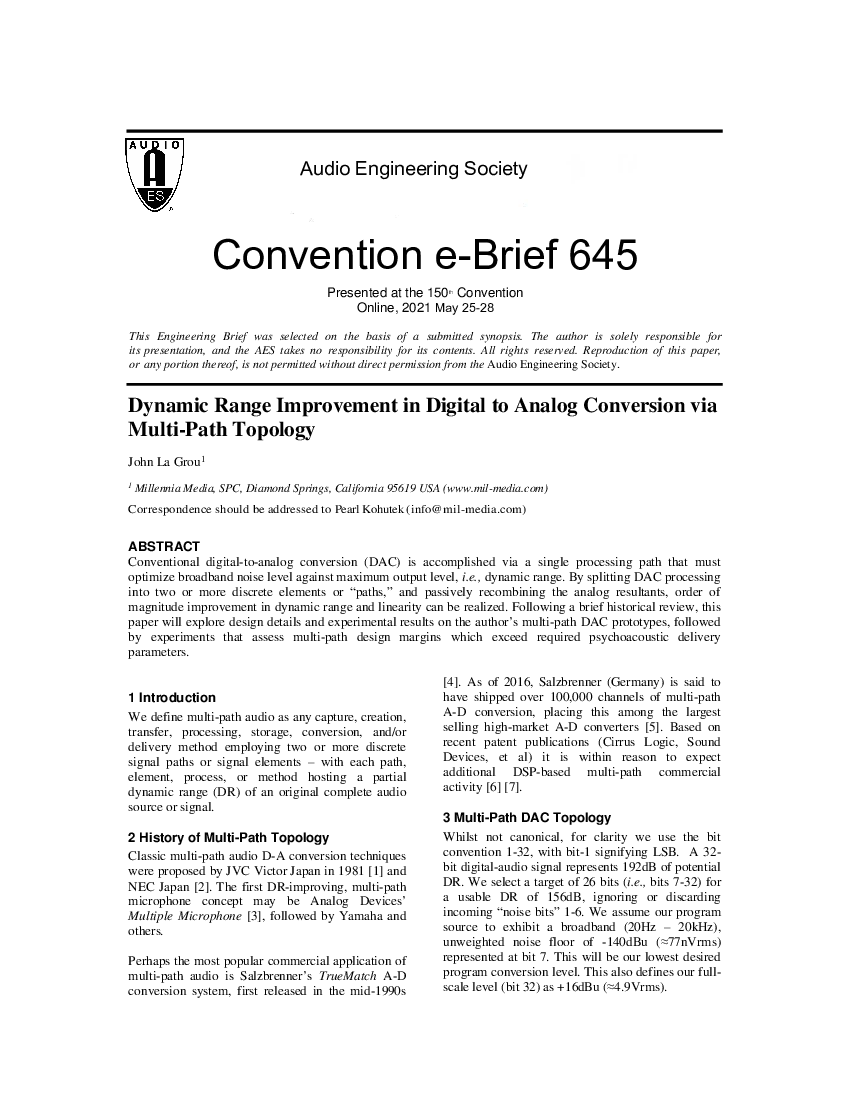Home / Publications / E-library page
You are currently logged in as an
Institutional Subscriber.
If you would like to logout,
please click on the button below.
Home / Publications / E-library page
Only AES members and Institutional Journal Subscribers can download
Conventional digital-to-analog conversion (DAC) is accomplished via a single processing path that must optimize broadband noise level against maximum output level, i.e., dynamic range. By splitting DAC processing into two or more discrete elements or “paths,” and passively recombining the analog resultants, order of magnitude improvement in dynamic range and linearity can be realized. Following a brief historical review, this paper will explore design details and experimental results on the author’s multi-path DAC prototypes, followed by experiments that assess multi-path design margins which exceed required psychoacoustic delivery parameters.
Author (s): La Grou, Jon
Affiliation:
Millennia Media, SPC, Diamond Springs, CA, USA
(See document for exact affiliation information.)
AES Convention: 150
Paper Number:645
Publication Date:
2021-05-06
Import into BibTeX
Session subject:
Audio Quality/Standards
Permalink: https://aes2.org/publications/elibrary-page/?id=21106
(384KB)
Click to purchase paper as a non-member or login as an AES member. If your company or school subscribes to the E-Library then switch to the institutional version. If you are not an AES member Join the AES. If you need to check your member status, login to the Member Portal.

La Grou, Jon; 2021; Dynamic Range Improvement in Digital to Analog Conversion via Multi-Path Topology [PDF]; Millennia Media, SPC, Diamond Springs, CA, USA; Paper 645; Available from: https://aes2.org/publications/elibrary-page/?id=21106
La Grou, Jon; Dynamic Range Improvement in Digital to Analog Conversion via Multi-Path Topology [PDF]; Millennia Media, SPC, Diamond Springs, CA, USA; Paper 645; 2021 Available: https://aes2.org/publications/elibrary-page/?id=21106